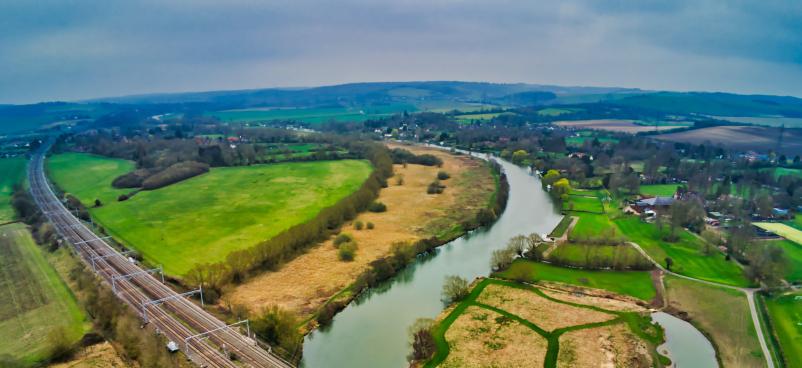Breadcrumb
Meeting societal and climate challenges requires significant investment
GIIA CEO Lawrence Slade spoke with Raconteur about the scale of investment needed in UK infrastructure and how best to achieve it

The UK has ambitious infrastructure plans. How can the industry facilitate investment required while aligning with regulatory frameworks?
Meeting the societal and climate challenges of the 21st century will require significant investment. The UK needs to invest around £600bn to meet its infrastructure needs over the next decade, with half of that expected to come from the private sector. To achieve this, we need changes to the model of economic regulation of the energy, water and telecoms industries.
Our Regulating for Investment report makes recommendations on the current policy and regulatory frameworks in the UK, focusing on how responsible investment can support the economy and environment while remaining sensitive to affordability concerns under these three broad headings:
1. Make sure the institutional arrangements are right
We need clearer policy direction from the government and a simplification of regulatory duties.
2. Incentivise the delivery of high-quality infrastructure
The current system incentivises short term efficiency improvements in operating expenditure. But investors need to have certainty and predictability to invest longer term.
3. Tackle the challenges of affordability
Cost of investment should be spread equitably, while targeting support for the most vulnerable. We need regulators to build intergenerational fairness into their framework.
How does the industry balance public and private finance and ensure the government is aligned to the long-term vision?
GIIA represents the leading investors in infrastructure from around the world. Our members have stakes in more than 2,000 infrastructure assets across 70 countries with an estimated value of $1.3tn that are helping to address the economic, social and environmental challenges facing the world. But more needs to be done.
The global ‘infrastructure gap’ is measured in trillions of dollars. Governments recognise the need for investment in ports, airports, renewable energy, resilient grid connections, clean water and digital infrastructure, but they don’t have the resources or, in many cases, the expertise to deliver.
Governments can unlock the necessary investment to address net zero, levelling up and technological developments by working with private investors. When deciding where to allocate their capital, investors are looking for a clear policy environment, stable and long-term regulatory conditions, and a visible pipeline of investable opportunities. There is also a role for government in the development of early stage technologies, to provide targeted public financing support that helps de-risk the investment environment.
How do we ensure infrastructure investment is climate-resilient and can help achieve net-zero emissions?
In PwC’s Unlocking Capital For Net Zero Infrastructure report, commissioned by GIIA, it is estimated that £40bn per year needs to be invested in new lowcarbon infrastructure over the next 10 years. With private capital typically contributing around £20bn of UK energy and utility infrastructure financing, this is a doubling in capital requirements.
For example, rainfall patterns are already impacting the water sector, with greater pressure on storm-water drainage systems in some areas and greater risk of drought in others. Disruption caused by Storm Arwen has highlighted issues around the level of resilience we expect from our energy networks.
The impacts of more extreme weather patterns are posing questions for policy-makers, regulators and operators. We need a public debate around how resilient we want our infrastructure to be and the implications for consumers in terms of funding that investment.
This interview originally appeared in the Times as part of Raconteur's latest Future of Infrastructure report.